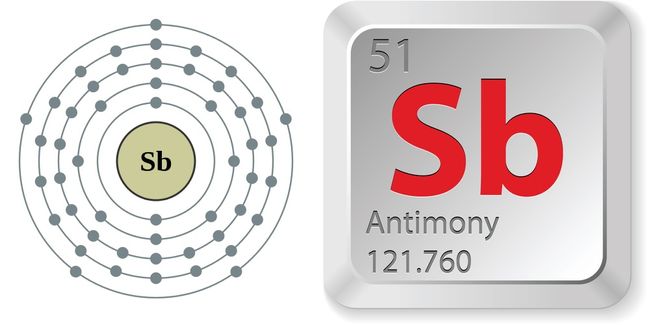


The successful curative effects of antimony on the sick King Louis XIV of France in a concoction called vin émétique disposed of any controversy concerning its efficacy. Drugs made from antimony were administered as purges. Paracelsus described antimony-disease as a specific condition caused by external factors for which specific remedies were needed. Historically, antimony became a fashionable cure among the wealthy and was approved as a medicine in 1666.

Antimonate ore has been reported to induce toxic effects and activate some protective mechanisms, including phagocytosis, immune responses, and inhibition of proteases. Penalties were imposed on illegal kiln constructions in an attempt to alleviate the air pollution because antimony ores are frequently associated with arsenic or lead and exposure of workmen working with imported stibnite ore has been reported.

In 1467, at Beverley, Yorkshire, 19 th and 20 th century laws dealing with air pollution were anticipated. The workplace exposure limit is 8-h Time Weighted Average (TWA) of 0.5 mg/m 3. Absorption spectrophotometry is used to analyse the concentration of antimony. Measurement of antimony and particulate matter is via samples collected onto a cellulose acetate filter (pore size, 0.8 µm) at an air flow rate of ca. Reproductive disorders and chromosome damage may be associated with chronic antimony exposure with consequent mutagenic and oncogenic potential and should be avoided in pregnancy and in patients with hepatic, renal, or cardiovascular disease. Antimony in conjunction with other metals may biologically alter several cellular defence mechanisms thus potentiating carcinogenesis. Other authors suggest an increased mortality from lung cancer and associated non-malignant respiratory heart diseases in workers exposed to antimony. McCallum describes the effect of antimony in potentiating antimony spots, heart disease, pneumoconiosis, and lung cancer. In some cases, cardiac arrhythmias and mild jaundice may occur necessitating treatment with intramuscular dimercaprol. The effects on health are inducement of vomiting and eye and mucous membrane irritation. Chronic exposure will potentiate lung, heart, and gastrointestinal diseases. Long-term exposure to antimony in smelting plants may result in the formation of antimoniosis, a particular form of pneumoconiosis. Exposure to antimony concentrations of 9 mg/m 3 of air will result in eye, skin, and lung irritation. The lack of importance of antimony compounds in terms of their mutagenic, carcinogenic, and teratogenic risks in pregnant women has negated the need for studies of the like. In 1916, antimony exposure was associated with lead intoxication, with symptoms including headache, abdominal pain, constipation, colic, distaste for food, loss of appetite, small mouth ulcers with salivation, dizziness, loss of weight, albuminuria, and glycosuria. Exposure can also occur via contaminated water, food, and soil contact. Workers exposed to airborne dust can have respiratory problems. Very pure antimony is used to make certain types of semiconductor devices such as diodes and infrared detectors. The element is used in alloys, as a constituent of paint pigments, and in rubber compounding. The trichloride (SbCl 3) is very toxic as it dissociates into its oxide and chlorine. A noxious gas stibine (SbH 3) is formed when antimony reacts with nascent hydrogen. The traditional method of treating the ore is to roast it with charcoal or coke and collect the volatile oxide fume (Sb 4O 6) from which pure antimony is refined. Antimony (Sb) (atomic number 51 atomic mass 121.75 g/mol density 6.684 g/cm 3 melting point 631☌) occurs naturally as a sulphide ore, stibnite (Sb 2S 3) and valentinite (Sb 20 3).


 0 kommentar(er)
0 kommentar(er)
